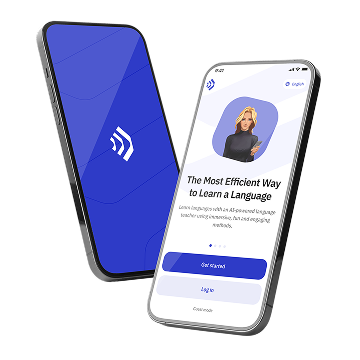Traditional Italian music is incredibly diverse, with each region having its own distinct musical traditions. From the soulful opera of the north to the lively tarantella of the south, Italy’s musical heritage is a testament to its rich cultural history.
Opera: The Heartbeat of Italian Music
Opera is perhaps the most iconic form of Italian music. Originating in the late 16th century, opera combines music, drama, and sometimes dance to tell a story. Famous composers such as Giuseppe Verdi and Giacomo Puccini have made significant contributions to this genre, with their operas still performed worldwide today. Listening to opera can be a fantastic way to improve your Italian. The clear enunciation and dramatic delivery make it easier to understand and follow the lyrics. Additionally, many operas are based on classic Italian literature, providing a deeper insight into the language and culture.
The Joyful Tarantella
The tarantella is a lively folk dance that originated in southern Italy. It is characterized by its fast-paced rhythm and is often accompanied by tambourines, accordions, and mandolins. The dance is said to have originated as a way to cure the bite of a tarantula spider, with the frantic movements helping to expel the venom. The lyrics of tarantella songs are often playful and humorous, making them a fun way to practice Italian. The repetitive nature of the lyrics also makes it easier for learners to pick up new vocabulary and phrases.
The Melancholic Neapolitan Song
Neapolitan songs, or canzoni napoletane, are another important part of Italy’s musical heritage. These songs originated in Naples in the 19th century and are known for their romantic and often melancholic lyrics. Famous Neapolitan songs include “O Sole Mio” and “Funiculì, Funiculà.” The slow tempo and clear diction of these songs make them ideal for language learners. Additionally, the themes of love and longing are universal, making it easier to connect with the lyrics on an emotional level.
Using Music to Learn Italian
Listening to traditional Italian music is not only a delightful experience but also a highly effective way to learn the language. Here are some tips on how to use music to improve your Italian skills:
Active Listening
Active listening involves paying close attention to the lyrics and trying to understand their meaning. This can be done by following along with the lyrics while listening to the song. Many websites provide the lyrics to popular Italian songs, making it easy to find and follow along. Start by listening to the song a few times without looking at the lyrics to get a feel for the rhythm and melody. Then, listen again while reading the lyrics. Try to identify any words or phrases you recognize. Finally, look up any unfamiliar words and make a note of them. This process will help you expand your vocabulary and improve your listening comprehension.
Singing Along
Singing along to Italian songs is a great way to practice pronunciation and intonation. It can also help improve your speaking skills by getting you used to the rhythm and flow of the language. Start with slower songs that have clear and simple lyrics, such as Neapolitan songs or ballads. As you become more confident, you can move on to faster and more complex songs, such as tarantellas or operatic arias. Don’t worry about getting every word right at first. The goal is to get used to the sounds and patterns of the language. Over time, your pronunciation and fluency will improve.
Understanding the Cultural Context
Many traditional Italian songs tell stories or convey themes that are deeply rooted in Italian culture. Understanding the cultural context of these songs can provide valuable insights into the language and make your learning experience more meaningful. For example, the tarantella is not just a dance; it is a reflection of the folklore and traditions of southern Italy. Similarly, opera often draws on historical and literary themes that are an important part of Italy’s cultural heritage. By learning about the cultural context of these songs, you can gain a deeper understanding of the language and the people who speak it.
Creating a Study Playlist
One way to incorporate music into your language learning routine is to create a study playlist of your favorite Italian songs. Include a mix of different genres and tempos to keep things interesting. Listen to your playlist regularly, whether you’re at home, in the car, or on the go. The more you listen, the more familiar you will become with the sounds and rhythms of the language. You can also use your playlist as a tool for focused study sessions. For example, choose one song from your playlist and spend some time analyzing the lyrics, looking up unfamiliar words, and practicing singing along.
Popular Traditional Italian Songs for Language Learners
Here are some popular traditional Italian songs that are great for language learners:
“O Sole Mio”
“O Sole Mio” is one of the most famous Neapolitan songs of all time. Written in 1898, it has been covered by countless artists, including the legendary Luciano Pavarotti. The song’s lyrics are a beautiful ode to the sun, with a simple and repetitive structure that makes it easy to follow. The slow tempo and clear diction make it an ideal choice for beginners.
“Funiculì, Funiculà”
Another classic Neapolitan song, “Funiculì, Funiculà,” was written in 1880 to commemorate the opening of the first funicular railway on Mount Vesuvius. The song’s upbeat tempo and catchy melody make it a fun and engaging choice for language learners. The lyrics are playful and humorous, providing a great opportunity to practice pronunciation and intonation.
“La Donna è Mobile”
“La Donna è Mobile” is a famous aria from Giuseppe Verdi’s opera “Rigoletto.” The song’s lively tempo and memorable melody make it a popular choice for both opera enthusiasts and language learners. The lyrics are relatively simple, with a repetitive structure that makes it easy to follow along.
“Tarantella Napoletana”
“Tarantella Napoletana” is a traditional tarantella song from Naples. The fast-paced rhythm and lively melody make it a fun and energetic choice for language learners. The lyrics are often lighthearted and humorous, providing a great opportunity to practice vocabulary and pronunciation.
“Santa Lucia”
“Santa Lucia” is a traditional Neapolitan song that dates back to the 19th century. The song’s gentle melody and romantic lyrics make it a popular choice for both singers and language learners. The slow tempo and clear diction make it easy to follow along and practice pronunciation.
Combining Music with Other Language Learning Techniques
While music is a powerful tool for learning Italian, it is most effective when combined with other language learning techniques. Here are some strategies to enhance your learning experience:
Reading and Writing
Incorporate reading and writing into your music-based learning routine. For example, after listening to a song and analyzing the lyrics, try writing a summary of the song in Italian. This will help reinforce your understanding of the lyrics and improve your writing skills. You can also try translating the lyrics into your native language to practice your translation skills.
Speaking and Conversation
Practice speaking and conversation by discussing the songs you are listening to with a language partner or tutor. Talk about the themes and stories behind the songs, and share your thoughts and opinions. This will help you practice your speaking skills and improve your ability to express yourself in Italian.
Listening and Comprehension
Enhance your listening and comprehension skills by watching videos or documentaries about traditional Italian music. Many of these videos include interviews with musicians and cultural experts, providing valuable insights into the music and its cultural context. Pay attention to the language used in these videos and try to follow along with the dialogue.
Grammar and Vocabulary
Use the lyrics of traditional Italian songs as a resource for learning grammar and vocabulary. Analyze the grammatical structures used in the lyrics and make note of any new words or phrases. Try to incorporate these new words and structures into your own writing and speaking practice.
Conclusion
Exploring traditional Italian music is a delightful and effective way to enhance your language learning journey. The rich diversity of Italy’s musical heritage provides a wealth of opportunities to practice listening, speaking, reading, and writing in Italian. By immersing yourself in the sounds, rhythms, and stories of traditional Italian songs, you can deepen your connection to the language and culture, and make your learning experience more enjoyable and meaningful. So, put on your favorite Italian playlist, sing along, and let the music guide you on your path to fluency.







